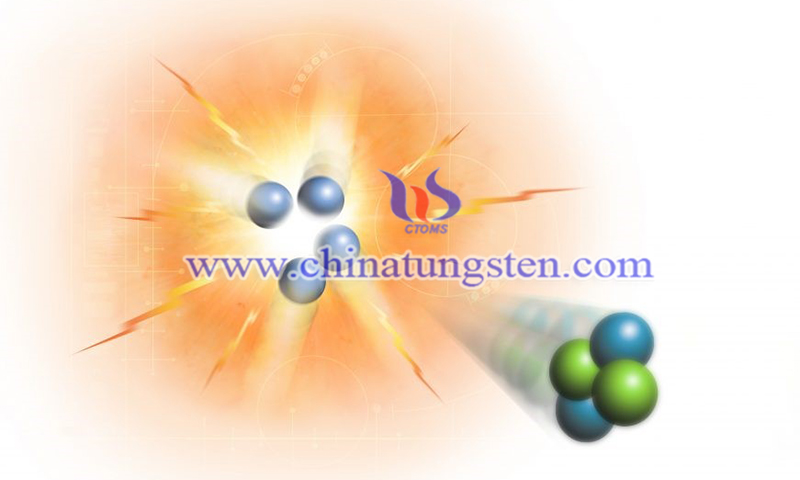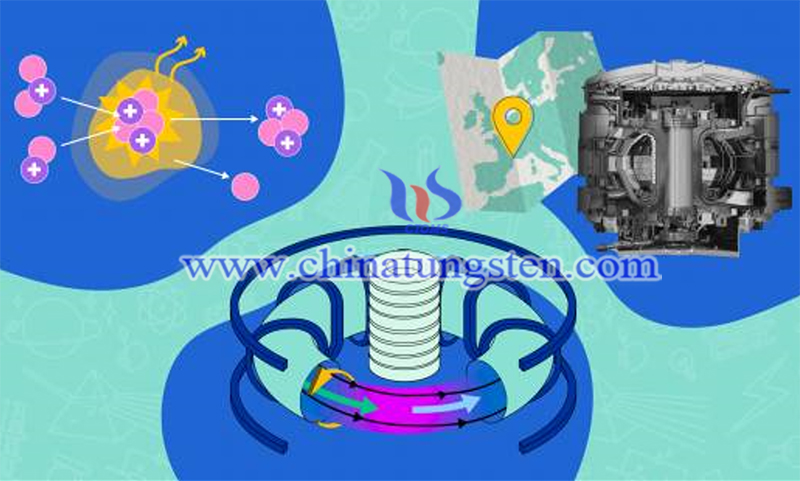Tungsten Oxidation Research Making Breakthroughs in Nuclear Fusion Technology
- Details
- Category: Tungsten's News
- Published on Friday, 12 August 2022 19:08
Yuanyuan Zhu, assistant professor of materials science and engineering and director of the Honors Program at the University of Connecticut (UConn), sees the study of tungsten oxidation as potentially leading to a key breakthrough in nuclear fusion technology. She said, "Tungsten is a gift from nature, and it is special because it has the highest melting point of any metal and remains robust at very high temperatures, making it ideal to use as the plasma-facing divertor armor in fusion."
As a result, tungsten is considered by scientists and engineers to be the best candidate for the construction of nuclear fusion reactors. Few metals can match it in terms of strength, good thermal conductivity, and radiation resistance, among other factors.
However, in the event of air leakage, it is estimated to be dangerous. When tungsten oxidizes, it becomes unstable and volatile. Since tungsten is exposed to nuclear radiation during normal operation, the resulting oxidized dust is radioactive and its release is extremely dangerous.

(Photo Source: UCONN)
This problem is one of many that scientists must address in order to develop nuclear fusion technology to make it a clean and safe energy source for sustained base-load power. Zhu has worked to better understand the thermal oxidation of tungsten under extreme conditions of nuclear fusion, and the U.S. Department of Energy (DOE) has taken great interest in her research.
This summer, the U.S. Department of Energy Office of Science announced that Zhu was selected for an Early Career Award for her work in fusion energy science. She is the third University of Connecticut researcher to receive a DOE career award since 2015.
Zhu said, "The potential of this work is 'transformative' in that fusion energy is key to replacing fossil fuels for electricity needs, but harnessing this energy is demanding and requires materials like tungsten that can handle extreme environments and conditions."
This project addresses a well-known safety hazard, namely the high-temperature oxidation of tungsten plasma surface material in the event of an air-entry accident. Currently, scientists do not fully understand the fundamental nanoscale processes of tungsten oxidation under pristine or irradiated conditions. Her research intends to understand how tungsten oxide evolves, and how fast it grows during oxidation and, based on the new mechanisms, develop strategies to make reactors safer and more tolerant.

(Photo Source: IAEA)
The experimental procedure of this project is also novel, and this study of tungsten oxidation will lead the way to breakthroughs in fusion technology. The project uses in situ environmental microscopy methods as well as computer vision models to obtain new results under oxidation conditions that cannot be obtained by conventional methods. Using a small gas cell the size of a thumbnail, in situ experiments simulate the oxidation process under abnormal conditions. The team will be able to see the evolution of the tungsten oxide layer, including the possible effects of radiation-induced defects on oxidation.
(Source: UCONN)
- Tungsten Manufacturer & Supplier, Chinatungsten Online: www.chinatungsten.com
- Tungsten News & Prices of China Tungsten Industry Association: www.ctia.com.cn
- Molybdenum News & Price: news.molybdenum.com.cn
- Tel.: 86 592 5129696; Fax: 86 592 5129797; Email: sales@chinatungsten.com



 sales@chinatungsten.com
sales@chinatungsten.com